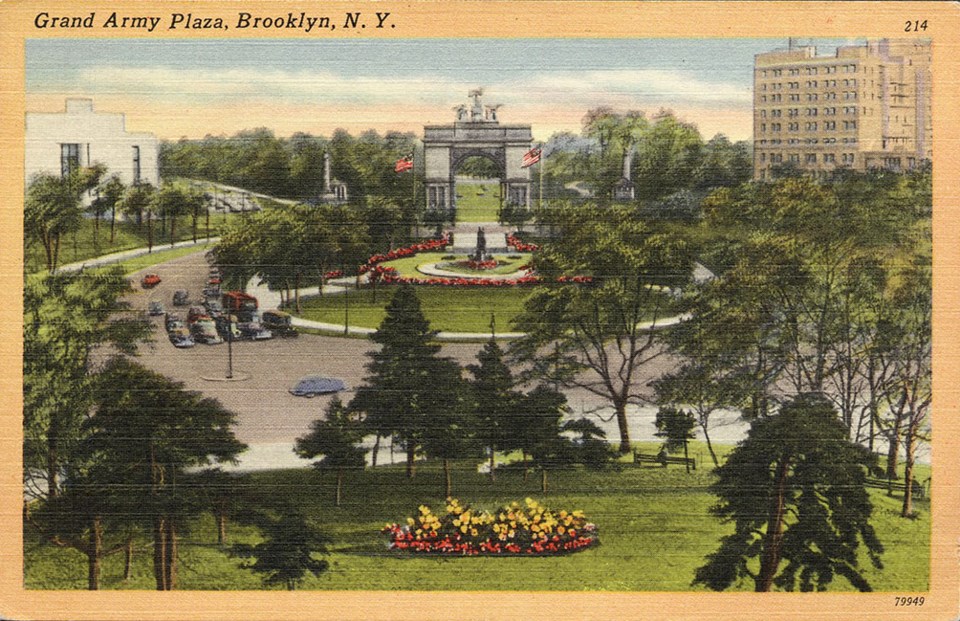
The Brooklyn Public Library's central location will be celebrating its 75th birthday on Saturday, September 10th. As a significant part of Brooklyn's history and culture it is only natural that the community recognize the Library and all it has come to offer the people in Brooklyn communities over the past 75 years.
Central Library's Director Jesse Montero explained during our tour that the Library's central building was planned for over 100 years, starting as far back as 1889 and formally opened in 1941 when Brooklyn was its own independent city.

"The plan was to create a cultural corridor here. So the Brooklyn Parks Commission said 'Let's figure out how to create a monumental library. We are the the 4th biggest city in the country. We need a library that is going to connote that importance,'" Montero said.
In 1905 Brooklyn became incorporated into New York City as a whole. It was determined that the triangular plot between Flatbush and Eastern Parkway would be the site for the main library, Montero explained.
Original architect Raymond Almirall had the idea to build the library with a beaux arts style, similar to that of the Brooklyn Museum.
"It was going to have this ornate beaux arts style with fancy columns and a dome top," Montero said.

[perfectpullquote align="left" cite="" link="" color="" class="" size=""]"One thing we can't say is that this is a really pristine quiet library when you walk into the lobby," said Jesse Montero. "It's got more the feel of a Grand Central Station."[/perfectpullquote]
Construction began in 1911, but after a few years, with the start of WWI and also some economic and political challenges, construction stopped, leaving only what was called the Flatbush Wing of the building.
"The building stood that way for many years, only partially constructed," Montero said. "It was referred to as 'the hole in the middle of Brooklyn' by mayor John Hylan. He wasn't a fan."
It remained that way for decades. It wasn't until the mid 1930s with a lot of public workspace projects through the New Deal that they were able to finalize the construction of the building, said Montero.
Almirall was long gone by then, but two new architects (Alfred Morton Githens and Francis Keally) were recruited, and wanted a more modern look for the building. They also wanted a cheaper construction plan.
"So instead of this really ornate beaux arts style, let's go for what's in style now," he said. "That's why we have this beautiful smooth art deco look. It's nice and smooth and was also cheaper to construct than all of these columns."
When looking at the Library from above it resembles the shape of an open book.
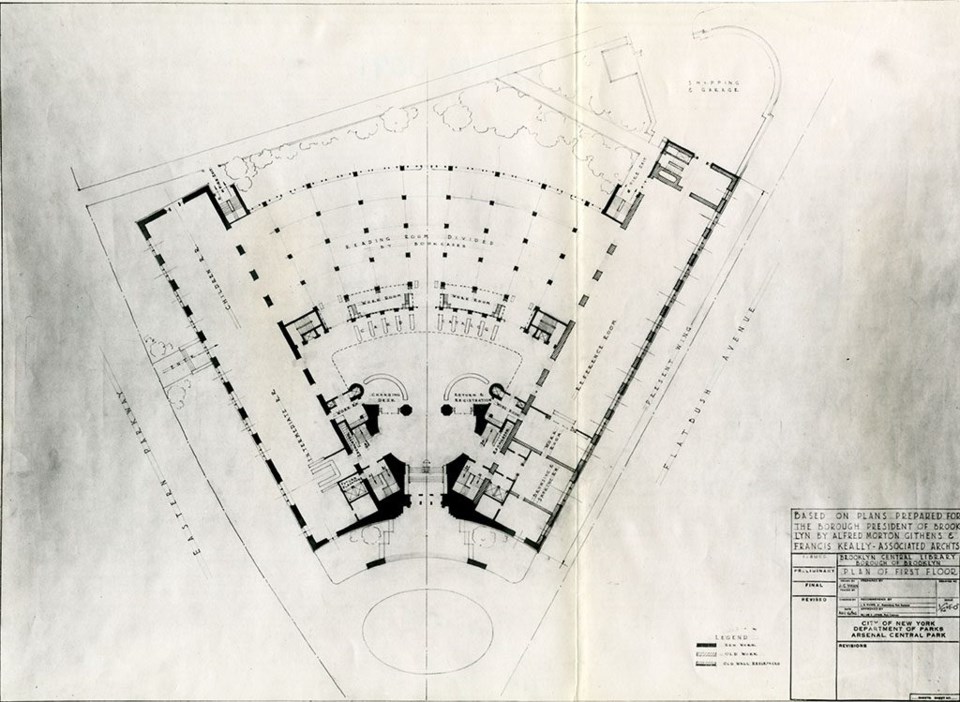
When facing the front entrance, you can see of the building what Montero described as "by far the most important feature:" the 50 ft high porteco. "If you look at these grills, these are all gold leaf figurines, and they're all representing different characters in American literature," Montero described.
These figurines include Hester Prynne from Nathaniel Hawthorne's The Scarlet Letter, and the whale figure from Herman Melville's Moby Dick.
Just outside the very front of the building is the Library Plaza, which holds community health fairs, bicycle repair clinics and many other public events.
Central Library is 352,000 square feet, with more than a million items in its collection. It sees 1.3 million visits a year, and the items in its collection circulate over 1.7 million times each year, Montero states.
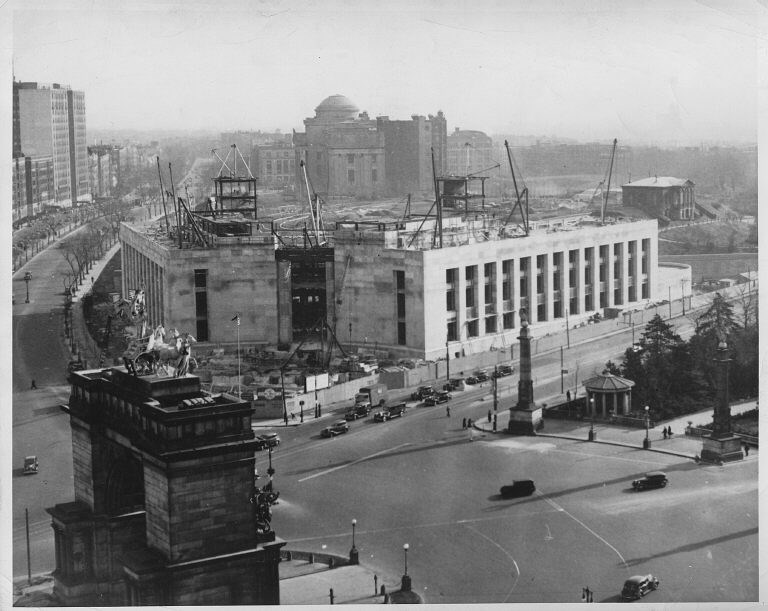
Photo: brooklynology.org
"One thing we can't say is that this is a really pristine quiet library when you walk into the lobby," he said. "It's got more the feel of a Grand Central Station."
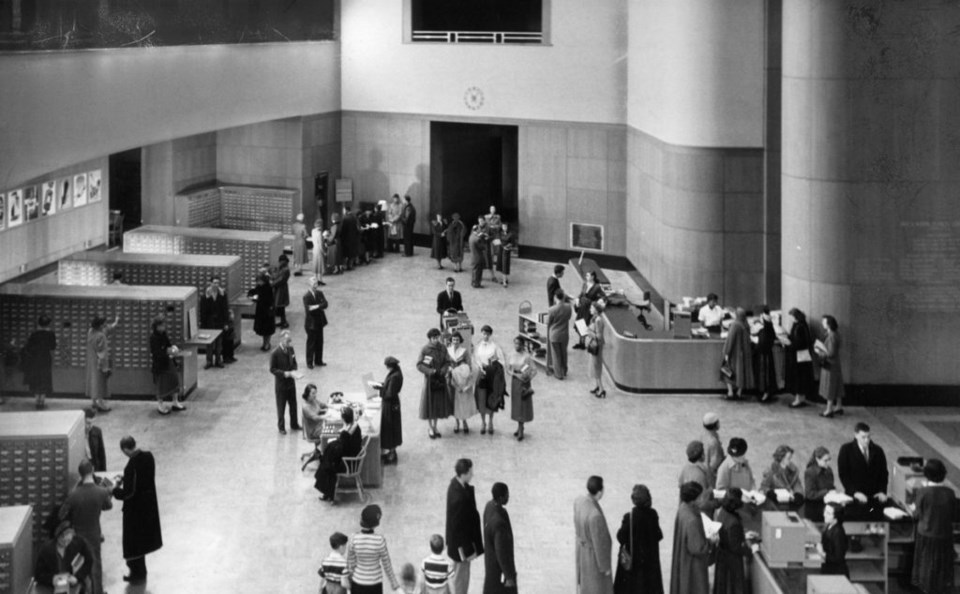
The lobby has 50 ft ceilings and is also referred to as the Grand Hall. Montero describes it as "a place where you can drink coffee. You can eat food. And people can have a public space to come together."
The Library lobby offers a variety of amenities that include a café, IDNYC, Passport Services Center and the Information Commons, complete with a lab, meeting rooms and workspace area. The Youth Wing is also on this floor.

Children's room c.1950s:" https://www.bklynlibrary.org
Other areas of the library include four major subject divisions for adults, Language and Literature, Arts and Music, Society Sciences and Technologies, and History Biography and Religion.
Local History Archives is a special space in the library that contains all things on Brooklyn History, including prints, ephemera, books, historical photos and a variety of different materials all dealing with Brooklyn from as far back as 1841 through 1955.
A recent addition to the Library is the Center for Contemporary Culture which opened in 2006. This makes Brooklyn Public Library very special and very unique. It is used for bigger performances such as author readings, jazz and classical music performances and seminars.
Some of the nation's most astute thinkers visit the library for talks, including figures like Pharrell, Robert Reich, and President Clinton.
Some of the special behind the scenes areas Montero shared were the four decks of storage below the public areas of the Library. He explained that there are about eight miles of shelving if you were to add up all the divisions in the public areas.

These decks of subterranean storage add an additional 28 miles of materials and subject matter, which are just the tip of the iceberg.
There are so many different things about the Brooklyn Public Library that make it special and unique from any other library institution in the country. However, its most special feature is the overwhelming sense of community you feel when you are in or even around it. There is not a time of the day that people are not utilizing one or several of the many offerings that BPL has to offer to people in the community.
Stop through the library this weekend to take part in this milestone celebration of what is indeed one of the borough's finest gems.

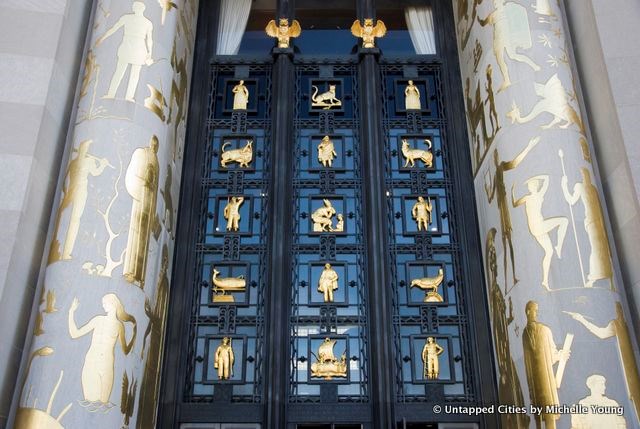

.png;w=120;h=80;mode=crop)
